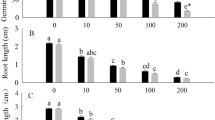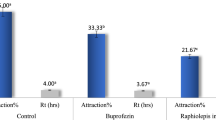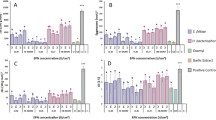Abstract
THE eriophyid gall mite, Cecidophyopsis ribis NaL, the vector of the reversion virus, is the most important pest of black currants. The mites migrate to new buds during a period lasting 3–4 months, but individuals are rarely exposed, while on the plant, to contact acaricides for more than a few days, and no non-phytotoxic systemic compound has yet been found which kills mites within the tissues of the host plant. Preliminary experiments at Long Ashton have shown that quaternary ammonium compounds and herbicides can cause sufficient interference with host and parasite relationships to exert some control. (2-Chloroethyl) trimethylammonium chloride, ‘Cycocel’, a plant growth retardant, has been shown to reduce tho reproductive rate of the aphid Brevicoryne brassicae (L.) on brassicas1, and to give some control of Verticillium wilt of tomato2. The effect of this compound on the black currant gall mite and the fungi most common on currants was therefore investigated.
This is a preview of subscription content, access via your institution
Access options
Subscribe to this journal
Receive 51 print issues and online access
$199.00 per year
only $3.90 per issue
Buy this article
- Purchase on Springer Link
- Instant access to full article PDF
Prices may be subject to local taxes which are calculated during checkout
Similar content being viewed by others
References
Van Emden, H. F., Nature, 201, 947 (1964).
Sinha, A. K., and Wood, R. K. S., Nature, 202, 824 (1964).
Clarke, G. M., and Corke, A. T. K., Ann. Rep. Long Ashton Res. Sta. 1955, 196 (1956).
Corke, A. T. K., Ann. Rep. Long Ashton Res. Sta., 1961, 144 (1962).
Corke, A. T. K., and Jordan, V. W. L., Ann. Rep. Long Ashton Res. Sta., 1964, 142 (1965).
Author information
Authors and Affiliations
Rights and permissions
About this article
Cite this article
SMITH, B., CORKE, A. Effect of (2-Chloroethyl) Trimethylammonium Chloride on the Eriophyid Gall Mite Cecidophyopsis ribis Nal., and Three Fungus Diseases of Black Currant. Nature 212, 643–644 (1966). https://doi.org/10.1038/212643b0
Published:
Issue Date:
DOI: https://doi.org/10.1038/212643b0
This article is cited by
-
10.1007/BF00304718
CrossRef Listing of Deleted DOIs (2011)
Comments
By submitting a comment you agree to abide by our Terms and Community Guidelines. If you find something abusive or that does not comply with our terms or guidelines please flag it as inappropriate.



